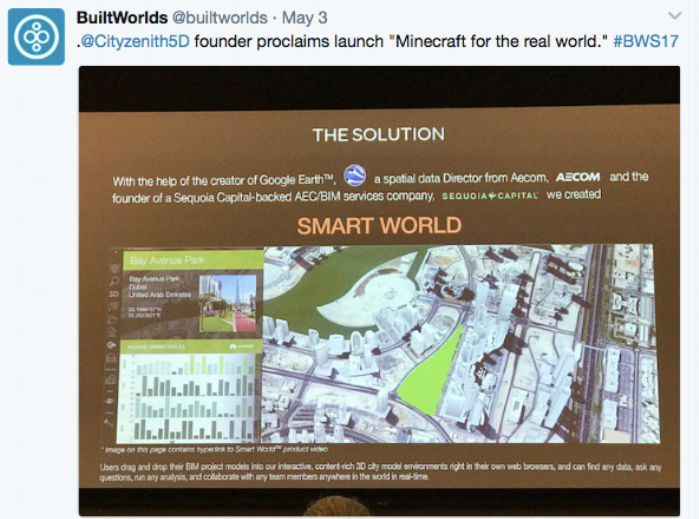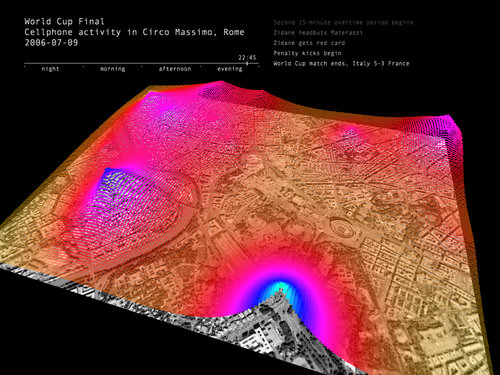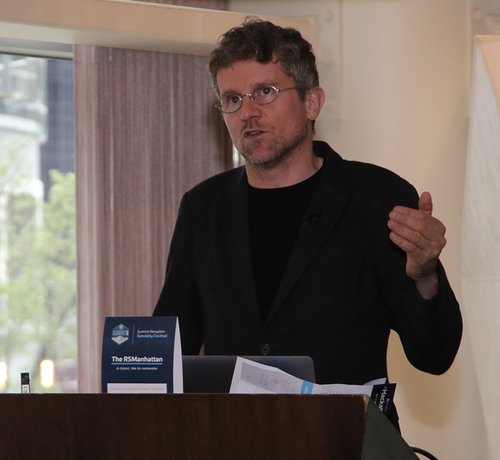
If cities really are our future, then certainly it makes sense that cities will be where the future happens first. After all, the densest population centers will yield the richest data upon which tomorrow’s most consequential decisions will be based.
Attendees last week at the annual BuiltWorlds Summit 2017 in Chicago were reminded of that fact in several discussions across multiple panels and presentations that underscored just how ‘alive’ our environments are fast becoming. Thanks to technology, sensors and ever-increasing data, said Day 2 keynote Carlo Ratti, “We can now analyze our cities like living organisms.”
Indeed, that is the mission of the Massachusetts Institute of Technology’s Senseable City Laboratory, which Ratti, who is both an architect and engineer, directs. “The way we describe and understand cities is being radically transformed—as are the tools we use to design them,” he explained. “As layers of networks and digital information blanket urban space, new approaches to the study of the built environment are emerging.”
The lab’s aim is to anticipate these changes and to study them. For our receptive audience, Ratti, who had traveled to the event from Singapore, offered several examples of how instructive seemingly invisible but measurable data can be in sensing and predicting a city’s needs in certain situations.
- Below, Ratti offered data showing cell phone activity across Rome during a World Cup Final match.
Such data is now the focus of Argonne National Laboratory’s ongoing Array of Things research project, a “Big Data” first in the U.S., which has begun installing 500 pole-mounted sensors across the City of Chicago as part of a three-year, $3-million study funded by the National Science Foundation.
“More of us are still influenced by anecdotes than data, and that can be problematic when our assumptions are wrong,” explained Charlie Catlett, a senior scientist at Argonne, which is also partnering with the University of Chicago. “We are trying to collect the data now that you can go back and check for progress updates as they change.”
Sensors will monitor air quality, sound intensity, surface temperatures, pedestrian and vehicular traffic patterns, and more, he added. After early trial and error and modifications to the sensors’ design, Catlett said that 100 such instruments will be installed by the end of the year. To date, he noted that 90 other cities from all over the world have contacted him about potentially deploying their own sensors. “So we may well be building an assembly line soon for these,” Catlett added.

Accurate data, of course, will become increasingly crucial to decision-making as cities try to maintain and upgrade infrastructure ahead of the coming urban population wave. And such planning must be managed against the backdrop of perpetually uncertain funding for public works projects.
“Going digital is the only way for us to go from what we need to what we can afford,” said Robert Mankowski, a civil engineer and VP of Product Development for Bentley Systems, Exton PA. Referencing the daunting costs for necessary repairs projected in the latest ASCE Infrastructure Report Card, he quipped, “My daughters know if they brought home a report card like that, they would be grounded.”
So we need to get smarter, Mankowski added, and that will require “active, intelligent infrastructure.” As one such successful example, he noted how the government of South Australia recently responded to historic droughts by redesigning and building “notoriously expensive” desalination plants to use weather forecasting and other environmental measures to predict much more efficiently how much water will be needed and when. “They now rely on digital engineering models,” he explained. So, in Australia, and elsewhere, he added, “Quality of life is now directly connected to the quality of our infrastructure.”
SMART, RESILIENT STRATEGIES
Fellow panelist Aaron Koch, the City of Chicago’s first Chief Resiliency Officer, agreed. As a result, he said, “Technology and data are now being used to inform policy and planning.”
And such rich data will help to inform Chicago’s first-ever official resiliency strategy, set to be released this fall, he added. “Twenty-six cities around the world have released resiliency strategies, in response to a challenge from the Rockefeller Foundation,” he said. “The goal is develop strategies that cities can use to ‘survive, adapt…and grow’, no matter what kinds of chronic stresses and acute shocks (i.e. severe weather, natural disasters, terrorist attacks) they might experience.”
“Data is worthless without the proper intention to use it.
Proudly, he also noted that the City of Chicago had reduced its carbon emission 7% between 2010 and 2015. Last month, it also just announced a new goal of having all city buildings powered 100% by renewable energy by 2025.
As the session drew to a close, panel moderator AECOM VP Bill Abolt wondered aloud if historically challenged inner cities will also see the benefits of innovation. “Infrastructure is crumbling everywhere, but how do we make sure that the smart, resilient city isn’t just the ‘rich’ city?” he asked.
Having worked in New York City before coming to Chicago, Koch stressed that cities must have the will to act on the information they gather. “Just having data doesn’t necessarily lead you to the smartest decision,” he said. “But data is worthless without the proper intention to use it.”
_____________________________________________________________________________________________________
- Below, Day 1 even included a presentation by Cityzenith promoting a Smart World data platform.




Discussion
Be the first to leave a comment.
You must be a member of the BuiltWorlds community to join the discussion.